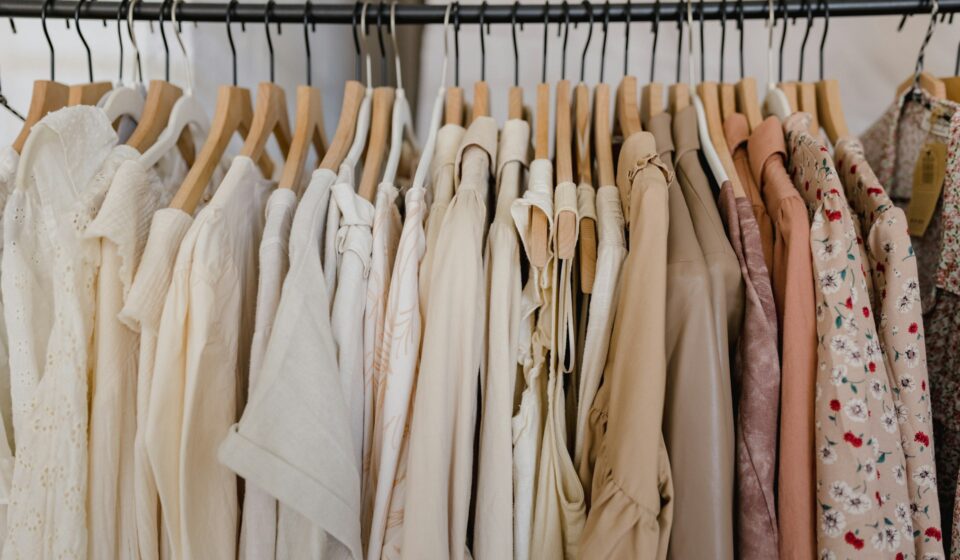
What’s Next for Custom Apparel? Design Movements Reshaping 2025
The custom apparel industry continues to evolve at breakneck speed, driven by technological advances, shifting consumer preferences, and a growing demand for personalized fashion. As we move into 2025, the landscape of custom t-shirts and branded apparel is being transformed by innovative design approaches that blend creativity with cutting-edge production techniques.
Table Of Content
- Sustainable and Eco-Conscious Designs
- Organic and Recycled Materials
- Water-Based and Eco-Friendly Inks
- Minimalist Eco-Messaging
- Tech-Integrated and Smart Apparel
- QR Code Integration
- Augmented Reality Elements
- Color-Changing and Thermochromic Materials
- Retro and Vintage-Inspired Aesthetics
- 90s and Y2K Revival
- Distressed and Worn-In Effects
- Retro Typography and Branding
- Personalized and Data-Driven Customization
- Individual Name and Number Customization
- Location-Based Designs
- Behavioral and Preference-Based Customization
- Bold Typography and Statement Graphics
- Oversized and Experimental Fonts
- Motivational and Inspirational Messaging
- Multilingual and Cultural Typography
- Mixed Media and Textural Elements
- Embroidery and Print Combinations
- Layered and Dimensional Effects
- Fabric Manipulation and Cut-Out Details
- Embrace the Future of Custom Apparel
From sustainable materials to AI-generated artwork, this year promises to bring fresh perspectives to fashion printing and custom design. Whether you’re a business owner looking to create memorable branded merchandise or an individual seeking unique personal expression, understanding these emerging trends will help you stay ahead of the curve.
The following six design movements are set to dominate the custom apparel space in 2025, each offering distinct opportunities for creativity and market differentiation.
Sustainable and Eco-Conscious Designs
Environmental awareness has moved from trend to necessity in the custom apparel industry. Brands and consumers alike are prioritizing eco-friendly options that reduce environmental impact without compromising on style or quality.
Organic and Recycled Materials
Fashion printing companies are increasingly offering organic cotton, recycled polyester, and innovative materials made from bamboo, hemp, and even recycled plastic bottles. These sustainable options provide excellent print quality while appealing to environmentally conscious consumers.
Water-Based and Eco-Friendly Inks
Traditional plastisol inks are giving way to water-based alternatives that offer softer hand-feel and reduced environmental impact. These inks penetrate the fabric rather than sitting on top, creating designs that age beautifully and maintain comfort through countless washes.
Minimalist Eco-Messaging
Design trends are embracing subtle environmental messaging through nature-inspired graphics, earth-tone color palettes, and minimalist typography that communicates sustainability values without being preachy.
Tech-Integrated and Smart Apparel
The intersection of technology and fashion is creating exciting possibilities for custom t-shirts that go beyond traditional printing methods.
QR Code Integration
Custom designs increasingly incorporate QR codes that link to digital content, social media profiles, or exclusive online experiences. This trend bridges the gap between physical apparel and digital engagement.
Augmented Reality Elements
AR-compatible designs allow wearers to unlock digital animations, filters, or interactive content when viewed through smartphone apps. This technology transforms static branded apparel into dynamic, engaging experiences.
Color-Changing and Thermochromic Materials
Heat-sensitive inks and materials that change color based on temperature or UV exposure are becoming more accessible, allowing for designs that transform throughout the day.
Retro and Vintage-Inspired Aesthetics
Nostalgia continues to drive design trends, with vintage-inspired custom apparel experiencing a significant resurgence.
90s and Y2K Revival
Bold neon colors, geometric patterns, and futuristic typography reminiscent of the late 90s and early 2000s are making a strong comeback. These designs tap into millennial and Gen Z nostalgia while offering fresh takes on classic aesthetics.
Distressed and Worn-In Effects
Fashion printing techniques that create authentic vintage appearances are in high demand. Cracking, fading, and weathered effects give new custom t-shirts the character of well-loved vintage pieces.
Retro Typography and Branding
Classic fonts, vintage logos, and old-school design elements are being reimagined for modern branded apparel, creating pieces that feel both familiar and fresh.
Personalized and Data-Driven Customization
Advances in digital printing and data analytics are enabling unprecedented levels of personalization in custom apparel.
Individual Name and Number Customization
Beyond basic monogramming, sophisticated customization options allow for unique combinations of names, numbers, and personal symbols that create truly one-of-a-kind pieces.
Location-Based Designs
GPS data and location services are inspiring designs that incorporate local landmarks, coordinates, or regional elements, creating custom t-shirts that celebrate specific places and experiences.
Behavioral and Preference-Based Customization
AI-driven platforms analyze user preferences, purchase history, and social media activity to suggest personalized design elements, colors, and styles that align with individual tastes.
Bold Typography and Statement Graphics
Typography is taking center stage in custom apparel design, with bold, expressive text becoming a dominant visual element.
Oversized and Experimental Fonts
Large-scale typography that spans the entire garment is trending, with designers experimenting with unconventional fonts, mixed typefaces, and creative text layouts.
Motivational and Inspirational Messaging
Custom t-shirts featuring powerful quotes, affirmations, and motivational messages are resonating with consumers seeking to express their values and aspirations through their clothing.
Multilingual and Cultural Typography
Designs incorporating multiple languages, cultural symbols, and diverse typography styles reflect the global nature of fashion and celebrate cultural diversity.
Mixed Media and Textural Elements
The boundaries between different design techniques are blurring as creators experiment with combining multiple approaches in a single piece.
Embroidery and Print Combinations
Hybrid designs that combine traditional embroidery with digital printing create rich, textural experiences that add depth and premium appeal to custom apparel.
Layered and Dimensional Effects
Multi-layer printing techniques, puff inks, and raised elements create designs with physical dimension that engage both visual and tactile senses.
Fabric Manipulation and Cut-Out Details
Creative cutting, fabric manipulation, and strategic placement of design elements transform basic garments into architectural fashion statements.
Embrace the Future of Custom Apparel
The custom apparel industry stands at an exciting crossroads where technology, sustainability, and creativity converge to create unprecedented opportunities for self-expression and brand differentiation. These six design movements represent more than temporary trends—they signal a fundamental shift toward more personalized, responsible, and innovative approaches to fashion.
As these trends continue to evolve throughout 2025, the most successful custom apparel projects will be those that thoughtfully combine multiple elements while staying true to their core message and audience. Whether you’re creating branded merchandise for your business or designing personal statement pieces, consider how these movements might enhance your vision and connect with your intended audience.
The future of custom apparel is bright, diverse, and more accessible than ever before. By staying informed about these emerging trends and experimenting with new approaches, you can create custom designs that not only look great but also resonate deeply with the values and aspirations of modern consumers.





